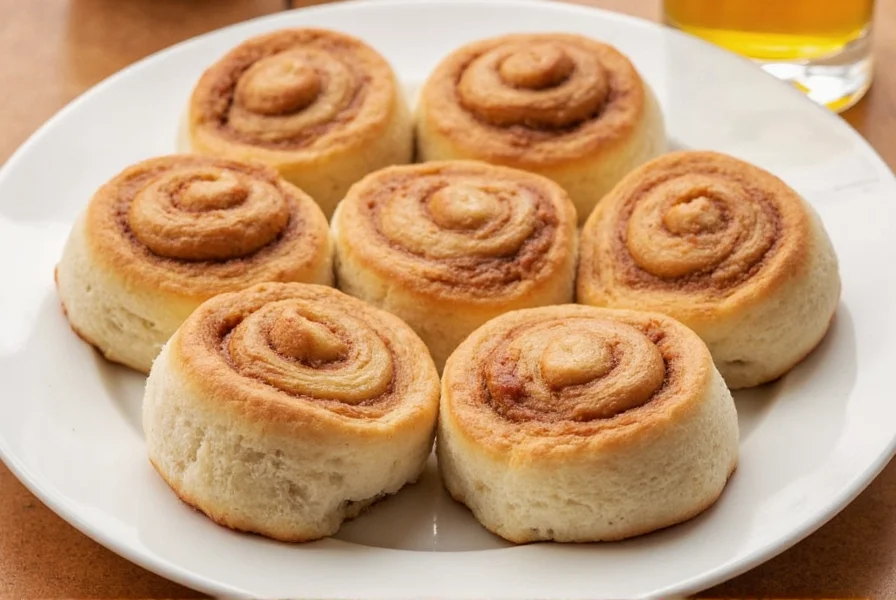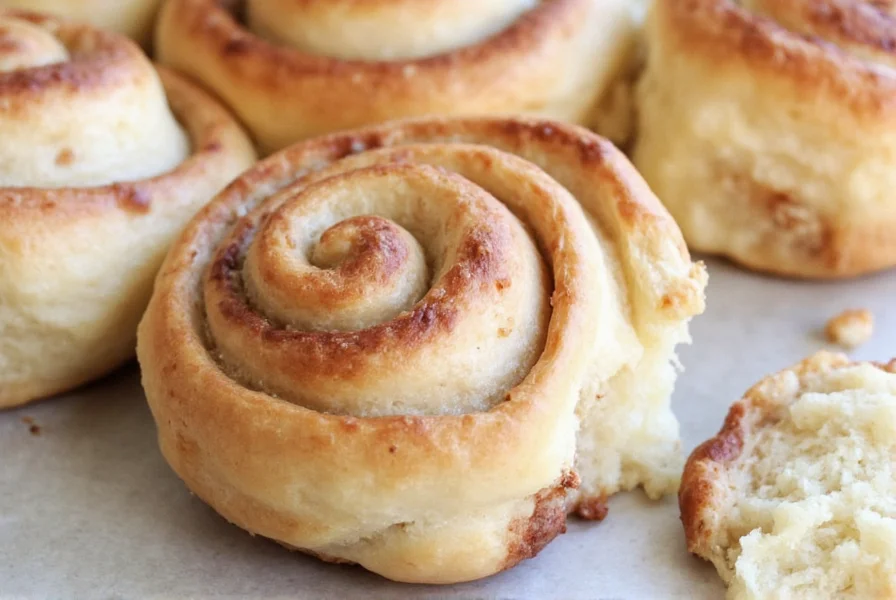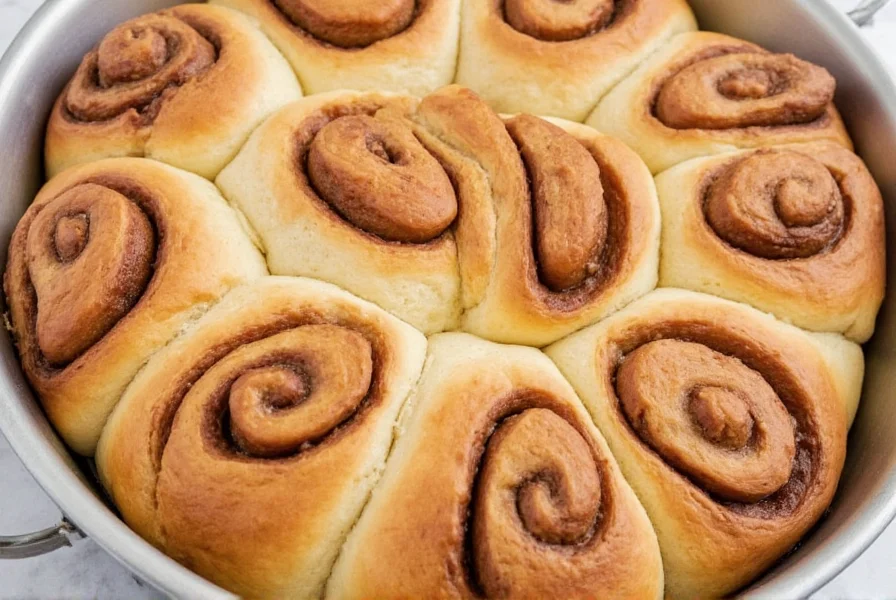Overnight cinnamon buns have revolutionized morning baking for home cooks seeking that perfect balance of convenience and quality. By leveraging cold fermentation, this method transforms ordinary cinnamon rolls into extraordinary pastries with deeper flavor complexity and pillowy texture. Professional bakers have used this technique for years, and now home cooks can achieve bakery-quality results with minimal morning preparation.
Why Choose an Overnight Cinnamon Buns Recipe
The science behind overnight cinnamon roll preparation lies in the slow fermentation process. When dough chills in the refrigerator for 8-12 hours, enzymes break down starches into simpler sugars, creating more complex flavors while developing the gluten structure gently. This results in:
- Enhanced flavor development compared to same-day recipes
- Improved texture with better rise and softer crumb
- Convenience of morning assembly with minimal active time
- More consistent results with less risk of over-proofing
Essential Ingredients for Perfect Overnight Cinnamon Buns
Quality ingredients make the difference between good and exceptional cinnamon buns. For the best make-ahead cinnamon roll method, gather these components:
| Ingredient | Amount | Key Purpose |
|---|---|---|
| All-purpose flour | 4½ cups (562g) | Provides structure without excessive chewiness |
| Unsalted butter, room temperature | ⅓ cup (76g) | Creates tender texture and rich flavor |
| Whole milk, warm | 1 cup (240ml) | Activates yeast and contributes to soft crumb |
| Active dry yeast | 2¼ tsp (7g) | Proper amount for slow overnight rise |
| Granulated sugar | ⅓ cup (67g) | Feeds yeast and balances cinnamon filling |
| Light brown sugar | 1 cup (215g) for filling | Creates signature caramel notes in filling |
| Ground cinnamon | 2 tbsp | Freshly ground provides superior flavor |
Step-by-Step Overnight Cinnamon Buns Recipe
Follow these precise instructions for the best overnight cinnamon buns recipe that guarantees perfect results every time:
Evening Preparation (15 minutes active time)
- Activate the yeast: Combine warm milk (105-110°F), 1 tbsp sugar, and yeast in a small bowl. Let sit 5-7 minutes until foamy.
- Mix dough: In stand mixer with dough hook, combine flour, remaining sugar, salt, and softened butter. Add yeast mixture and egg. Mix on low until combined, then medium speed for 5 minutes.
- First rise: Place dough in lightly oiled bowl, cover with plastic wrap, and let rest at room temperature for 1 hour.
- Prepare filling: Mix brown sugar and cinnamon. Roll out dough to 18x12 inch rectangle. Brush with melted butter, then sprinkle filling evenly, leaving ½ inch border.
- Roll and cut: Tightly roll dough from long side, pinch seam to seal. Cut into 12 equal rolls using dental floss for clean slices.
- Refrigerate: Place rolls in greased 9x13 baking dish, cover tightly with plastic wrap, and refrigerate 8-12 hours.
Morning Baking (25 minutes)
- Warm slightly: Remove rolls from refrigerator 30 minutes before baking to take the chill off.
- Bake: Preheat oven to 350°F. Bake rolls for 22-28 minutes until golden brown and internal temperature reaches 190°F.
- Frost: While warm, apply cream cheese frosting for perfect melt-in consistency.
Troubleshooting Common Overnight Cinnamon Bun Issues
Even with careful preparation, challenges can arise with make-ahead cinnamon roll recipes. Here's how to solve them:
- Dense texture: Usually caused by too much flour. Measure flour properly using the scoop-and-level method, not packing it into the cup.
- Rolls spreading out: Dough was too warm when refrigerated. Ensure your refrigerator maintains 40°F or below for proper cold fermentation.
- Underproofed rolls: If your kitchen is particularly cold, extend room temperature rest to 45 minutes before baking.
- Overbrowning: Tent with foil during last 10 minutes of baking if tops brown too quickly.
Storage and Serving Recommendations
For optimal enjoyment of your homemade overnight cinnamon buns:
- Consume within 24 hours for best texture (reheat gently in microwave for 10 seconds)
- Store leftovers in airtight container at room temperature for up to 2 days
- Freeze unfrosted rolls for up to 3 months—thaw overnight in refrigerator before baking
- Pair with strong coffee or vanilla latte to balance the sweetness

Variations for Your Overnight Cinnamon Buns Recipe
Once you've mastered the basic overnight cinnamon roll method, experiment with these popular variations:
- Apple cinnamon buns: Add 1 cup finely diced apples to the filling for a delightful texture contrast
- Bacon bourbon glaze: Incorporate 2 tbsp bourbon and 4 strips cooked bacon into your frosting
- Whole wheat option: Substitute 1 cup all-purpose flour with white whole wheat flour for added nutrition
- Vegan adaptation: Use plant-based butter, almond milk, and flax egg for dairy-free version

Frequently Asked Questions
Can I prepare overnight cinnamon buns more than 12 hours in advance?
Yes, but with limitations. You can refrigerate the shaped rolls for up to 18 hours with minimal quality loss. Beyond 24 hours, the yeast activity diminishes significantly, resulting in less rise and flavor development. For longer preparation windows, freeze the shaped rolls instead of refrigerating.
Why do my overnight cinnamon buns sometimes collapse after baking?
This typically occurs when the dough has over-proofed during the cold fermentation. To prevent collapse, ensure your refrigerator maintains a consistent temperature of 38-40°F. If your kitchen is particularly warm, reduce the room temperature rest before baking to 15-20 minutes instead of 30.
Can I use instant yeast instead of active dry yeast for overnight cinnamon buns?
Yes, instant yeast works well for overnight cinnamon roll recipes and can be mixed directly with dry ingredients without activation. Use the same quantity (2¼ tsp), but note that instant yeast is slightly more potent, so some bakers prefer reducing to 2 tsp for extended cold fermentation periods.
How do I adjust the recipe for high-altitude baking?
At elevations above 3,000 feet, reduce yeast by ¼ tsp to prevent over-proofing, increase liquid by 2-4 tablespoons to compensate for dry air, and lower oven temperature by 25°F while extending baking time slightly. The cold fermentation process actually helps stabilize high-altitude doughs by slowing yeast activity.











 浙公网安备
33010002000092号
浙公网安备
33010002000092号 浙B2-20120091-4
浙B2-20120091-4